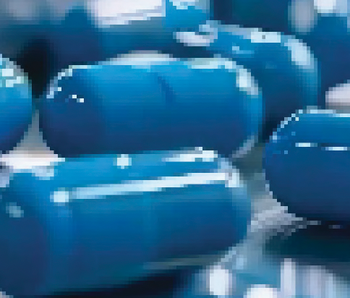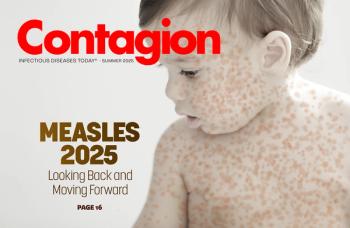
- October 2019
- Volume 4
- Issue 5
Same-Day PrEP Initiation: Simplifying Access and Dismantling Barriers to Care
Unsurprisingly, STD clinics have reported increased patient interest in PrEP; however, these clinics often face challenges in providing longitudinal patient care because of limited resources and capacity.
Highlighted Study: Same Day PrEP Initiation During Drop-In Sexually Transmitted Diseases Clinic Appointments
Kamis KF, Marx GE, Scott KA, et al. Open Forum Infect Dis. 2019;6(7):ofz310.
doi: 10.1093/ofid/ofz310.
The US Centers for Disease Control and Prevention (CDC) estimated that as of 2015, approximately 1.2 million individuals were eligible to take pre-exposure prophylaxis (PrEP) to prevent HIV.1 However, a 2017 study found that only approximately 100,000 individuals were actually taking PrEP in the United States.2 Several groups have addressed the challenge of increasing PrEP uptake as health care professionals consider novel strategies to deliver this resource to populations in need.
Traditionally, municipal and community-operated sexually transmitted disease (STD) clinics have been at the forefront of tackling challenges related to sexual and gender minority health. Unsurprisingly, STD clinics have reported increased patient interest in PrEP and have also observed an uptick in PrEP use and adherence.3,4 However, these clinics often face challenges in providing longitudinal patient care because of limited resources and capacity. As a result, STD clinics frequently become venues for PrEP referral rather than initiation, a model that only adds another obstacle to the PrEP engagement cascade.
Kamis and colleagues conducted a single-site study in Denver, Colorado, to examine whether same-day PrEP initiation at a busy, urban STD clinic would be feasible and safe and lead patients to continue PrEP care.5 Eligible participants had to be at least 18 years of age and meet the indications for PrEP as defined by 2017 CDC guidelines (Table).6 Patients were excluded if they had HIV or a history of renal dysfunction, chronic hepatitis B infection, pregnancy, indications for HIV postexposure prophylaxis, or signs and symptoms consistent with acute HIV infection. The enrollment cap was set at 100, the number of funded 30-day PrEP starter packs available.
The investigators reviewed pregnancy and rapid HIV results during the clinic visit; any other abnormal laboratory results were communicated to patients within 2 days of enrollment. Participants were required to meet with a patient navigator, who confirmed readiness to initiate PrEP and conducted a financial screening, assessing income and insurance status. The patients were scheduled for 1-month follow-up visits at participating clinics based on patient preference and insurance status. Additionally, the patient navigator contacted the participants 1 week after enrollment to assess any adverse effects of medication. The navigator administered a satisfaction survey to all participants 3 months after enrollment, and reviewed the medical records of each patient up to 6 months after enrollment.
Of the 100 participants enrolled, the median age was 28 years; the overwhelming majority (98%) were cisgender males, all of whom were men who have sex with men (MSM); and nearly half of study participants (48%) identified as non-Hispanic white. Of note, no participants had any abnormal baseline laboratory results. Seventy-eight percent of participants attended at least 1 follow-up visit with a PrEP provider, and more than half (57%) attended at least 2 follow-up visits within 180 days of enrollment. No HIV seroconversions were observed by chart review within the 6-month follow-up period. In multivariable analysis, after adjusting for age, race/ethnicity, income, and insurance status, only income was associated with follow-up appointment attendance, revealing that each $10,000 increase in income was associated with a 1.7-fold increase in the odds of attending a PrEP follow-up appointment. Fifty-four participants responded to the satisfaction survey at 3 months and reported satisfaction with the option for same-day PrEP initiation; 96% of respondents reported plans to continue using PrEP.
Simplifying medication access has been proved effective in engaging patients in care and promoting adherence. Same-day antiretroviral (ART) initiation has repeatedly been associated with improved ART uptake, retention in care, and virologic suppression.7,8 This study demonstrates that same-day PrEP initiation is indeed feasible. For the 100 study participants, this model was safe; however, given the limited sample size, generalizing these data is difficult. Finally, the percentage of participants retained in PrEP care at 6 months through this model mirrors national trends.9 Unsurprisingly, lower income is negatively associated with PrEP retention, underscoring the systemic barriers patients face to accessing not only sexual health care but general health care as well.
As the United States continues to scale up PrEP initiation and promote adherence, following the official grade A recommendation from the US Preventive Services Task Force, uptake in areas with limited resources is vital.10 The CDC reported that from 2014 to 2017, PrEP use among MSM in urban areas increased from 6% to 35%; however, this trend is blunted in the African American and Hispanic/Latinx populations, low-income individuals, and those who are uninsured.11 Implementation of a same-day PrEP initiation model is only 1 part of the solution. Inclusion of insurance enrollment, mental health, employment, and housing services is critical in engaging and retaining patients taking PrEP to help end the HIV epidemic.
Aniruddha (Anu) Hazra, MD, is an assistant professor in the Section of Infectious Diseases and Global Health at the University of Chicago in Illinois. His research and clinical interests center on sexually transmitted infections and their impact on sexual and gender minorities of Chicago’s South and West sides.
References
- Smith DK, Van Handel M, Wolitski RJ, et al. Vital signs: estimated percentages and numbers of adults with indications for preexposure prophylaxis to prevent HIV acquisition—United States, 2015. MMWR Morb Mortal Wkly Rep. 2015;64(46):1291-1295. doi: 10.15585/mmwr.mm6446a4.
- Sullivan PS, Giler RM, Mouhanna F, et al. Trends in the use of oral emtricitabine/tenofovir disoproxil fumarate for pre-exposure prophylaxis against HIV infection, United States, 2012-2017. Ann Epidemiol. 2018;28(12):833-840. doi: 10.1016/j.annepidem.2018.06.009.
- Cohen SE, Vittinghoff E, Bacon O, et al. High interest in preexposure prophylaxis among men who have sex with men at risk for HIV infection: baseline data from the US PrEP demonstration project. J Acquir Immune Defic Syndr. 2015;68(4):439-448. doi: 10.1097/QAI.0000000000000479.
- Liu AY, Cohen SE, Vittinghoff E, et al. Preexposure prophylaxis for HIV infection integrated with municipal- and community-based sexual health services. JAMA Intern Med. 2016;176(1):75-84. doi: 10.1001/jamainternmed.2015.4683.
- Kamis KF, Marx GE, Scott KA, et al. Same-day HIV pre-exposure prophylaxis (PrEP) initiation during drop-in sexually transmitted diseases clinic appointments is a highly acceptable, feasible, and safe model that engages individuals at risk for HIV into PrEP care. Open Forum Infect Dis. 2019;6(7):ofz310. doi: 10.1093/ofid/ofz310.
- US Centers for Disease Control Prevention. Preexposure prophylaxis for the prevention of HIV infection in the United States—2017 update. cdc.gov/hiv/pdf/risk/prep/cdc-hiv-prep-guidelines-2017.pdf. Published March 2018. Accessed July 7, 2019.
- World Health Organization. Guidelines for managing advanced HIV disease and rapid initiation of antiretroviral therapy. apps.who.int/iris/bitstream/handle/10665/255884/9789241550062-eng.pdf?sequence=1. Published July 2017. Accessed July 7, 2019.
- Colasanti J, Sumitani J, Mehta CC, et al. Implementation of a rapid entry program decreases time to viral suppression among vulnerable persons living with HIV in the southern United States. Open Forum Infect Dis. 2018;5(6):ofy104. doi: 10.1093/ofid/ofy104
- Chan PA, Mena L, Patel R, et al. Retention in care outcomes for HIV pre-exposure prophylaxis implementation programmes among men who have sex with men in three US cities. J Int AIDS Soc. 2016;19(1):20903. doi: 10.7448/IAS.19.1.20903.
- US Preventive Services Task Force, Owens DK, Davidson KW, et al. Preexposure prophylaxis for the prevention of HIV infection: US Preventive Services Task Force recommendation statement. JAMA. 2019;321(22):2203-2213. doi: 10.1001/jama.2019.6390.
- Finlayson T, Cha S, Xia M, et al; National HIV Behavioral Surveillance Study Group. Changes in HIV preexposure prophylaxis awareness and use among men who have sex with men — 20 urban areas, 2014 and 2017. MMWR Morb Mortal Wkly Rep. 2019;68(27):597-603. doi: 10.15585/mmwr.mm6827a.
Articles in this issue
about 6 years ago
Antibiotic Resistance: Patients Don't Get It, and We Need to Helpabout 6 years ago
Evaluating the Role of New Beta-Lactam Agents for Uncommon Pathogensabout 6 years ago
Investigational Treatments for Clostridioides difficile InfectionNewsletter
Stay ahead of emerging infectious disease threats with expert insights and breaking research. Subscribe now to get updates delivered straight to your inbox.






























































































































































































































































































